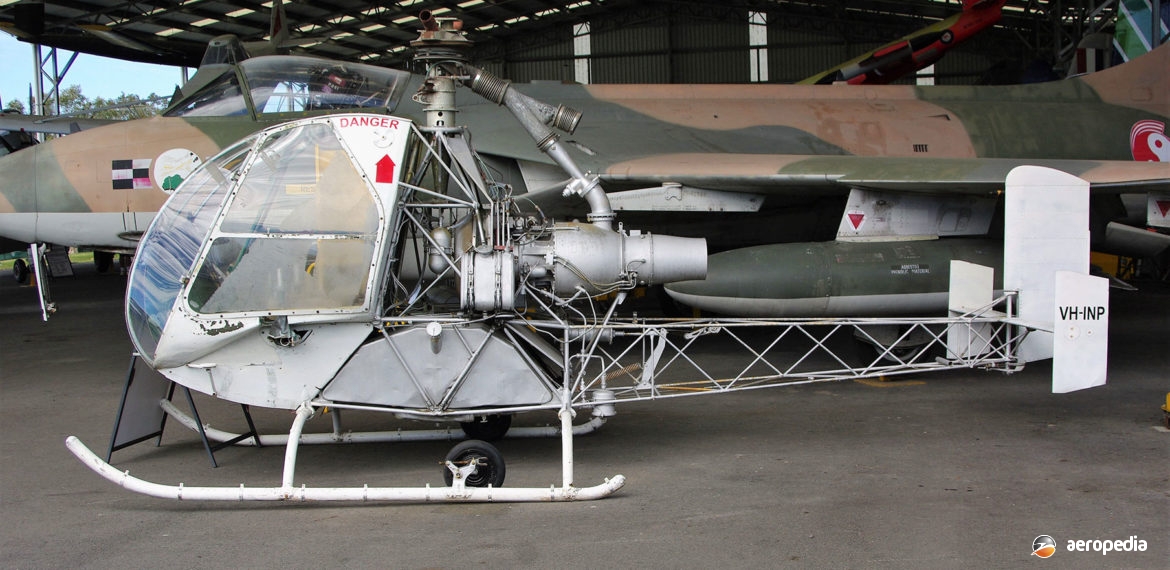Photograph:
Sud Aviation SO-1221 Djinn VH-INP (c/n 1005) at the Queensland Air Museum at Caloundra (Ron Cuskelly)
Country of origin:
France
Description:
Two-seat light general-purpose helicopter
Power Plant:
One 179 kw (240 shp) Turbomeca Palouste IV turboshaft
Specifications:
- Rotor diameter: 10.97 m (36 ft)
- Fuselage length: 5.309 m (17 ft 5 in)
- Height: 2.56 m (8 ft 5 in)
- Max speed: 130 km/h (81 mph)
- Cruising speed: 100 km/h (62 mph)
- Inclined climb rate: 210 m/min (690 ft/min)
- Normal max range: 180 km (112 miles)
- Ferry range: 322 km (200 miles)
- Empty weight: 360 kg (794 lb)
- Loaded weight: 762 kg (1,680 lb)
History:
The Djinn was the first jet driven helicopter in the world, being designed by the Sud-Ouest concern which subsequently became part of Sud Aviation when the French aircraft industry was nationalised. Five prototypes of the design were built by SNCASO, the first flying on 2 January 1951. Subsequently a pre-production series of 22 machines was built, full production later being continued at the Helicopter Section of Sud Aviation, which was formed by the amalgamation of SNCASO and the Sud-Est group.
The Djinn was unusual in that it had a “cold jet” rotor. Tip jets were supplied with compressed-air from the turbine power-plant. No further combustion occurred at the rotor-tips, as quite often occurred with rotor-tip driven helicopters. Residual thrust from the turbine was blown over the aerodynamic rudder to provide directional control.
The Djinn was quite successful. Examples were sold to Argentina, Austria, Germany, Italy, Mexico, The Netherlands, and Switzerland. Three were supplied to the US Army for evaluation as the YHO-1DJ; and large numbers were sold in France, some being supplied to the French Aviation Legere d’Artillerie. In the military role it could carry stretchers on either side of the fuselage, or anti-tank missiles such as the Nord SS-10. In March 1957 an example set an altitude record of 8376.5 m (17,860 ft.)
An example arrived in Australia in 1957 for Ansett/ANA. This machine (ex F-ZVZU – c/n 1005-FR23) became VH-INP in November 1957, being assembled in Sydney, NSW. However, it only lasted in service for a few months, crashing on 21 May 1958. It was not immediately repaired at that time and was placed in storage where it remained until obtained by the Chewing Gum Field Museum at Talabadgera, QLD and placed on display. In 1998 it was noted at Coolangatta, QLD undergoing restoration. In later years it was owned by Lanhams Air Taxis on the Queensland Gold Coast until it was obtained by the Queensland Air Museum at Caloundra where it has been restored and placed on display in the museum’s collection of aircraft and helicopters.

